"What happened to all the black people on the runway?" asked model Tyson Beckford, who attended several shows at New York Fashion Week. "There are no blacks on the cats."
Naomi Campbell put it another way: "Women of color are not a trend. That's the bottom line." And while Campbell wasn't invited to the shows this week and didn't attend, the supermodel may have been on to something. It seems that while the fashion industry was worrying about how skinny models were, it was neglecting another problem: how white they were.
There were drops of color here and there, but with the exception of a couple of shows, the runways were lined with pallid, bony bodies.
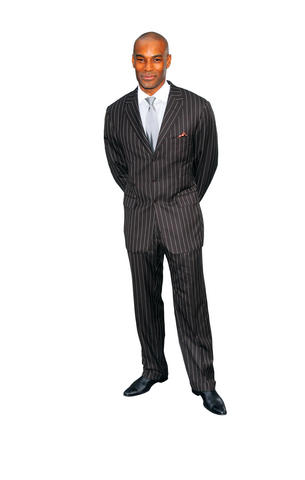
PHOTO: AGENCIES
"There used to be myself, Naomi Campbell, Veronica Webb, Tyra Banks," Beckford said. "There used to be a lot of us out there, but today a lot of the designers just aren't catering to black people." In truth, this Fashion Week looked like about as diverse - or homogenous - as many before it. But if ever there should have been more people of color on the runway, the time was now.
The issue has been the topic of three panel discussions since September held by former model and agent Bethann Hardison. Diane von Furstenberg, president of the Council of Fashion Designers of America, sent a memo to its members encouraging them to create fashion shows "that are truly multicultural." The media has focused on the issue.
"I do believe it did have an effect on the shows," says Kyle Hagler, manager at IMG Models, adding that there were a couple of new, diverse faces. "Obviously there is still more that needs to be done." Casting director Jennifer Venditti, owner of JV8Inc, says more ethnic models were used, but they were the same ethnic models as always. She says she only recognized a couple of new models.
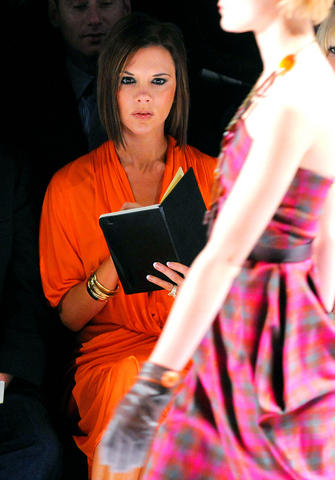
PHOTO: AGENCIES
"With the white girls, there's like a huge influx of people that you never saw before," says Venditti, who did castings for several shows, including Doo.Ri, Peter Som, BCBG and Rodarte. "I feel like it's always the same ethnic people."
Sean "Diddy" Combs made a statement by using only black models in his fall Sean John show on Friday. And other black designers, such as Tracy Reese, show diverse runways.
That's why Venditti says it's going to take a non-black designer to really make a change and embrace different colors and shapes. "A lot of times these girls are being judged on body type by someone of a different ethnicity," she says.
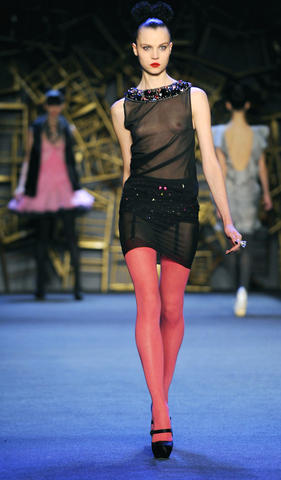
PHOTO: AGENCIES
The late 1980s and early 1990s were seemingly a better time for black models, including Campbell, Banks, Webb, Beverly Peele and Karen Alexander. Before then there was Pat Cleveland, Naomi Sims, Iman and Beverly Johnson, the first black woman to appear on the cover of Vogue magazine in 1974.
While there isn't another Tyra or Naomi today there are also no big-name Christys or Giseles, either.
Gisele Bundchen, probably the last model who became a household name, helped usher in an era when Brazilian bombshells dominated the catwalk. That era has passed, even in Brazil, where critics complained earlier this year that Sao Paulo Fashion Week was full of models who were European in appearance.
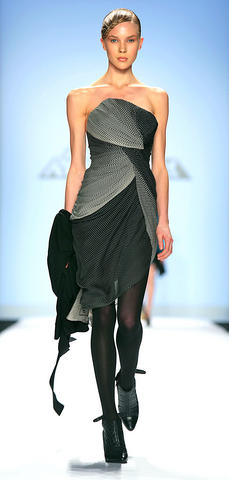
PHOTO: AGENCIES
On Forbes' 2007 list of the top 15 earning models in the industry, only one - Liya Kebede - was black. The "in look" right now is white, says Holly Alford, a fashion historian from Virginia Commonwealth University.
"It's a white European girl look that is being made popular on the magazine covers," she says.
Still, Chanel Iman Robinson, who is black, is one of the most in-demand models this season. And Hagler hates to think that race is a trend.

PHOTO: AGENCIES
"I think it's outrageous to think that we would exclude groups of people because they are not quote unquote fitting the trend," he says. "If it comes down to that, I would probably not work in this industry any longer. So hopefully this is not a trend. Hopefully this discussion has inspired people to take action." There is a lot of finger pointing over whose action that should be. Some blame the modeling agencies for not sending more ethnic models to casting calls. Others blame the designers for not hiring ethnic models. Then there are those who put the onus on the casting directors, who work for the designers.
Ivan Bart, senior vice president at IMG Models, says he sent a diverse group of models to the casting calls for this Fashion Week.
One of the agency's Asian models, Emma Pei, has worked in several shows.
"In the end, it's up to the designer to make the ultimate decision on who they are going to cast for the show," Bart says.
Fashion designer Nick Verreos says he has asked agencies to send models of color only to have them send mostly white women. And Venditti, also director of Billy The Kid, says there are so few ethnic girls at the casting calls that there are not many to choose from. Some of the models of color are eliminated because of fit or walk.
Still, she doesn't blame the agencies. She asks, why should an agency bring on lots of ethnic models if no one is calling to book them? Verreos admits that some designers simply won't use models of color.
"I have heard rumblings that the girls of color take away from the garments, that they are so fierce and have so much of a persona, you notice them first as opposed to noticing the clothing," he says. "So there are a lot of designers who would rather have the clothing be noticed and have a pale background. I just don't think that's right." The entire industry needs to take responsibility, says Neal Hamil, director of Elite Model Management North America, which is sponsoring the next Town Hall meeting.
"There really is not one group or component of the fashion community that is more guilty than others," he says. "We're all failing. There was a difference this season ever so slight. The better news is that everyone in the industry can also be part of the solution."

Behind a car repair business on a nondescript Thai street are the cherished pets of a rising TikTok animal influencer: two lions and a 200-kilogram lion-tiger hybrid called “Big George.” Lion ownership is legal in Thailand, and Tharnuwarht Plengkemratch is an enthusiastic advocate, posting updates on his feline companions to nearly three million followers. “They’re playful and affectionate, just like dogs or cats,” he said from inside their cage complex at his home in the northern city of Chiang Mai. Thailand’s captive lion population has exploded in recent years, with nearly 500 registered in zoos, breeding farms, petting cafes and homes. Experts warn the

The unexpected collapse of the recall campaigns is being viewed through many lenses, most of them skewed and self-absorbed. The international media unsurprisingly focuses on what they perceive as the message that Taiwanese voters were sending in the failure of the mass recall, especially to China, the US and to friendly Western nations. This made some sense prior to early last month. One of the main arguments used by recall campaigners for recalling Chinese Nationalist Party (KMT) lawmakers was that they were too pro-China, and by extension not to be trusted with defending the nation. Also by extension, that argument could be

Aug. 4 to Aug. 10 When Coca-Cola finally pushed its way into Taiwan’s market in 1968, it allegedly vowed to wipe out its major domestic rival Hey Song within five years. But Hey Song, which began as a manual operation in a family cow shed in 1925, had proven its resilience, surviving numerous setbacks — including the loss of autonomy and nearly all its assets due to the Japanese colonial government’s wartime economic policy. By the 1960s, Hey Song had risen to the top of Taiwan’s beverage industry. This success was driven not only by president Chang Wen-chi’s
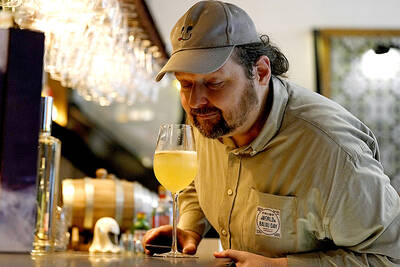
The centuries-old fiery Chinese spirit baijiu (白酒), long associated with business dinners, is being reshaped to appeal to younger generations as its makers adapt to changing times. Mostly distilled from sorghum, the clear but pungent liquor contains as much as 60 percent alcohol. It’s the usual choice for toasts of gan bei (乾杯), the Chinese expression for bottoms up, and raucous drinking games. “If you like to drink spirits and you’ve never had baijiu, it’s kind of like eating noodles but you’ve never had spaghetti,” said Jim Boyce, a Canadian writer and wine expert who founded World Baijiu Day a decade